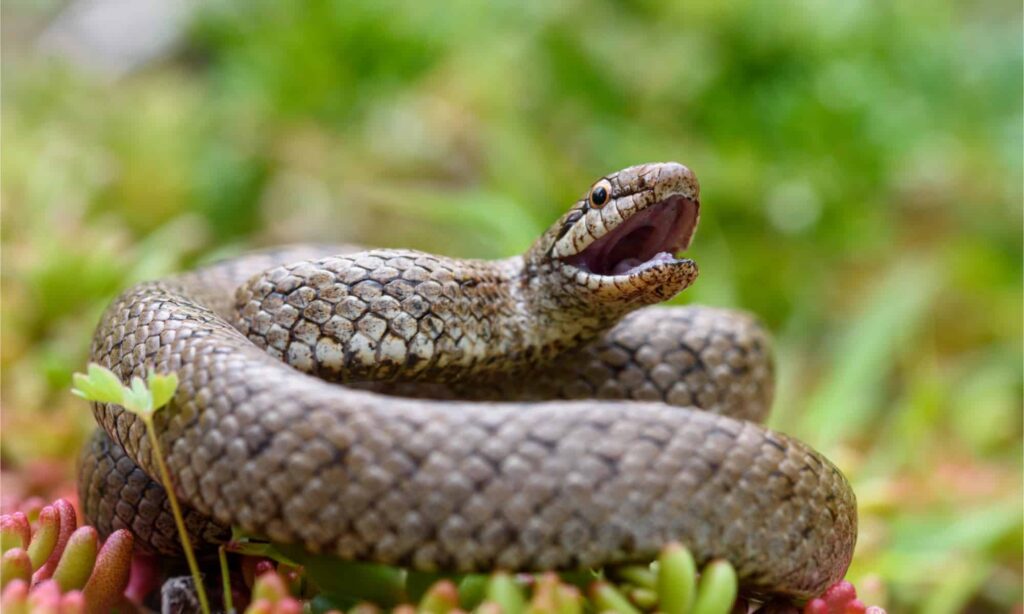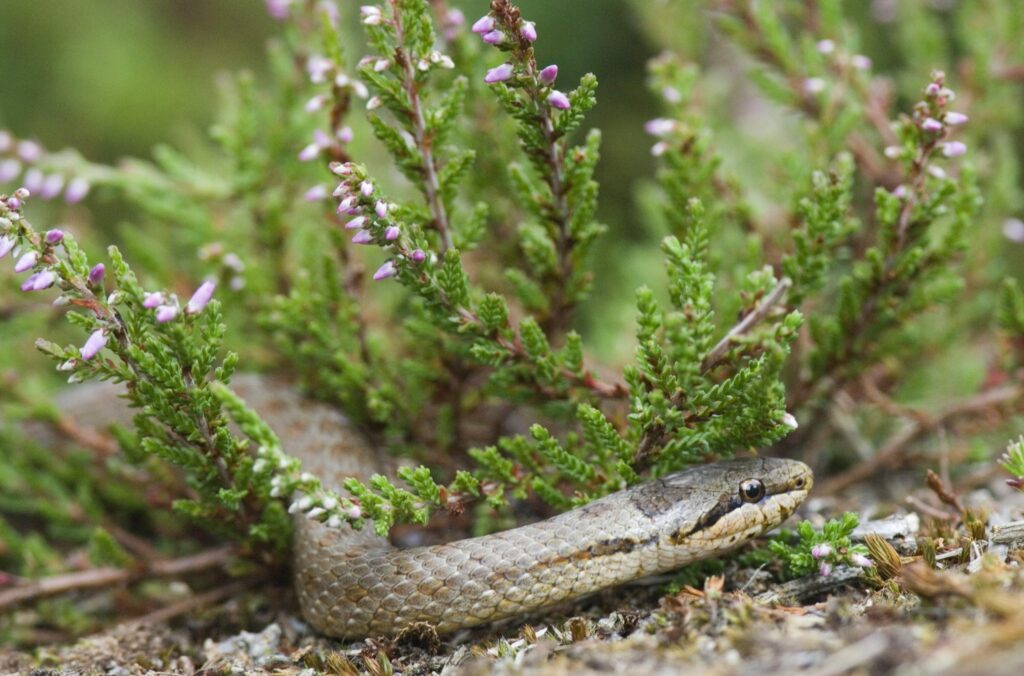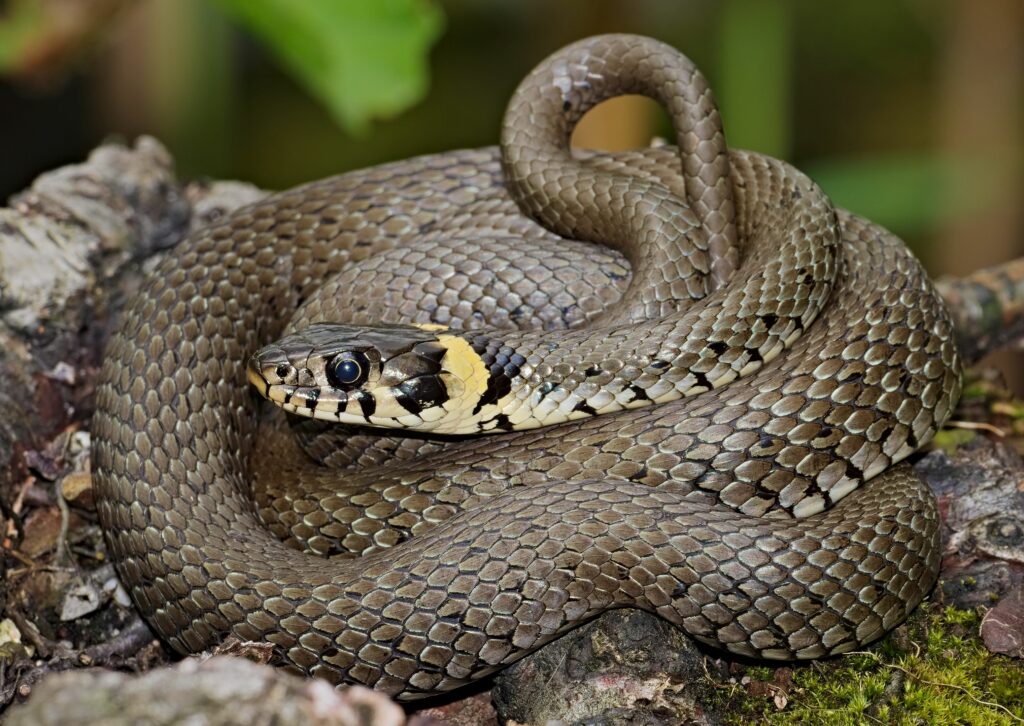The Smooth Snake, scientifically known as Coronella austriaca, is a non-venomous snake species native to various regions of Europe, including the British Isles. With its secretive nature, distinctive markings, and unique habitat requirements, the Smooth Snake has intrigued researchers and reptile enthusiasts alike. This comprehensive article aims to provide an in-depth exploration of the intriguing world of Smooth Snakes, delving into their characteristics, habitat preferences, prey dynamics, conservation status, and more.
Physical Characteristics and Markings
Smooth Snakes are medium-sized snakes, typically measuring between 60-70 cm in length when fully grown. They have a slender body with smooth scales, which give them their common name. These scales, also known as dorsal scales, have a flat appearance and provide the snake with a sleek and streamlined form.
One of the most striking features of Smooth Snakes is their distinct colouration and markings. They usually have a light brown or sandy colour, often with a darker stripe running along the length of their bodies. This darker stripe is accompanied by a series of darker spots or markings, creating a diamond or criss-cross pattern. The head of the Smooth Snake is usually adorned with an eye stripe, adding to its unique appearance.

Habitat Preferences
Smooth Snakes exhibit specific habitat requirements, often favouring heathland habitats and areas with a mixture of grassland and dune formations. These reptiles can be found in a range of habitats, including sand dunes, coastal grasslands, heathlands, and lowland areas. Such habitats provide the necessary cover, food sources, and suitable conditions for their survival.
The preference for heathland habitats is particularly significant for the Smooth Snake, as it is considered one of the rarest reptiles in the UK. These habitats are characterized by open areas with patches of heather, gorse, and other low-lying vegetation. Smooth Snakes utilize the dense vegetation and sheltered areas within heathlands for protection and thermoregulation.
Prey Dynamics and Feeding Habits
Smooth Snakes primarily feed on a variety of prey, including lizards, small mammals, and birds. They are skilled predators that employ different strategies to capture their prey. When targeting larger prey items, such as lizards, Smooth Snakes use constriction to subdue and consume their meal. This feeding technique involves coiling their bodies around the prey and squeezing it until it becomes immobilized.
The diet of Smooth Snakes also includes bird species, particularly fledgling birds that may fall victim to their stealthy hunting tactics. Nesting birds within heathland habitats are particularly vulnerable to predation by Smooth Snakes. The snake’s ability to blend into its surroundings, thanks to its colour pattern and secretive nature, allows it to approach its avian prey undetected.

Conservation Status and Mitigation Efforts
Smooth Snakes are considered a priority species for conservation efforts due to their rarity and habitat requirements. Their population dynamics and survival are closely tied to the conservation of heathland habitats and the overall health of reptile populations. Smooth Snakes are protected under various legal frameworks, including the Wildlife and Countryside Act, which prohibits the intentional killing or disturbance of these snakes.
Mitigation measures have been implemented to protect Smooth Snakes during developments that may impact their habitats. Reptile specialists often conduct surveys to assess the presence of Smooth Snakes and other native reptile species in designated areas. These surveys inform conservation efforts and help identify appropriate mitigation measures to protect the reptile populations and their habitats.
Smooth Snake vs. Other Snake Species
Smooth Snakes are often confused with other snake species, particularly the Grass Snake (Natrix natrix). While they share some similarities, such as their preference for similar habitats, there are distinct differences that set them apart. One notable difference is their colouration and markings. Smooth Snakes have a lighter brown or sandy colouration with a darker stripe and series of spots, while Grass Snakes have a greenish color with a yellow collar behind their heads.
Another distinguishing feature is the scales on their undersides. Smooth Snakes have smooth ventral scales, while Grass Snakes have keeled scales. These differences in scale texture contribute to the unique appearance of each species and aid in their identification.

Conservation Efforts and Challenges
The conservation of Smooth Snakes and other native reptile species faces several challenges. Habitat loss and degradation due to urbanization, agricultural practices, and land development remain significant threats to their populations. Fragmentation of habitats also poses a risk, as it isolates populations and restricts their ability to disperse and find suitable mates.
To address these challenges, conservation efforts focus on habitat preservation and restoration. Creating and maintaining heathland habitats, including appropriate vegetation management and controlling invasive species, are crucial for the survival of Smooth Snakes. Public education and awareness campaigns also play a vital role in fostering understanding and appreciation for these elusive reptiles.
Conclusion
The Smooth Snake, or Coronella austriaca, is a fascinating reptile species that thrives in a range of habitats, with a particular affinity for heathlands and grassland-dune formations. Its physical characteristics, distinct markings, and specialized habitat requirements make it a remarkable and sought-after sighting for reptile enthusiasts. As a priority species for conservation efforts, the protection and preservation of its habitats are essential for the long-term survival of the Smooth Snake.
By understanding and appreciating the unique characteristics and ecological roles of Smooth Snakes, we can contribute to their conservation and ensure the continued existence of these captivating reptiles in our natural landscapes. Through collaborative efforts, habitat restoration, and public engagement, we can safeguard the future of Smooth Snakes and promote the conservation of all native reptile species.
Sam loves to learn about animals and their habitats. He has been a nature lover from a very young age, and has been writing papers and articles about wildlife for as long as he can remember.
